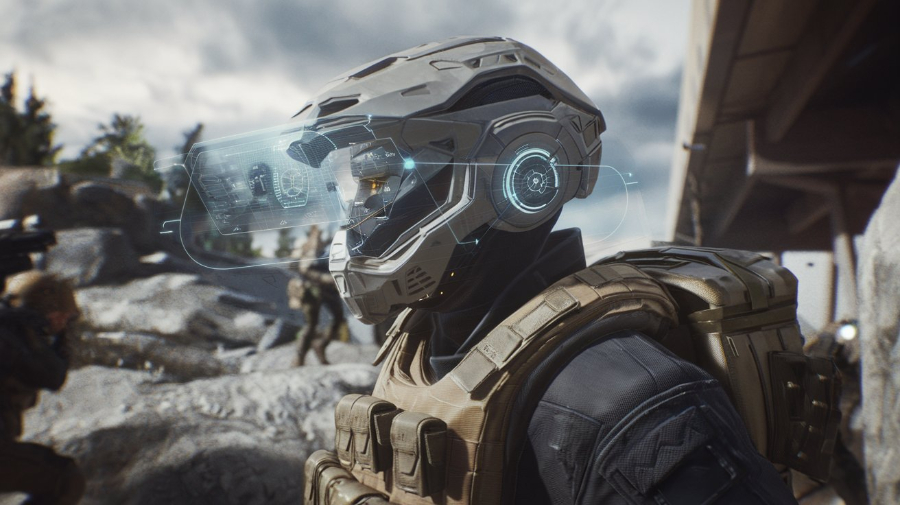The Integrated Visual Augmentation System (IVAS) Market is experiencing robust growth, driven by the increasing demand for advanced soldier-worn technologies that enhance military capabilities. As geopolitical tensions and global defense budgets rise, IVAS has emerged as a critical solution to modernize military operations and provide enhanced situational awareness.
Market Overview
According to recent reports, the IVAS market is valued at USD 1.0 billion in 2024 and is expected to reach USD 1.7 billion by 2029, at a Compound Annual Growth Rate (CAGR) of 11.1%. The system integrates cutting-edge technologies such as virtual reality (VR) and augmented reality (AR) into a unified platform, providing military personnel with enhanced vision, depth perception, and real-time data overlays. With applications ranging from combat missions to simulation training, IVAS systems are transforming how soldiers interact with their environment.
The IVAS Industry is also projected to see significant growth in the volume of aircraft utilizing Helmet-Mounted Displays (HMD) and Night Vision Devices (NVD), from 520 units in 2024 to 1024 units by 2029. This expansion underscores the increasing reliance on AR/VR technologies to improve situational awareness and mission success.

Integrated Visual Augmentation System Industry
Download Our PDF Brochure for More Details: https://www.marketsandmarkets.com/pdfdownloadNew.asp?id=264968355
Key Market Drivers
1. Transformation of Traditional Military Capabilities
The rapid shift in national security strategies across the globe, driven by peer and near-peer competition, has catalyzed the demand for advanced military technologies. Countries like the United States, Germany, and Japan are investing heavily in modern soldier-worn systems to address evolving mission requirements across multidomain operations. Defense agencies are increasingly looking beyond traditional defense suppliers to source new technologies, particularly in areas like AR/VR integration for battlefield applications.
2. Increased Defense Budgets
Governments worldwide are allocating significant resources to procure advanced military equipment to stay competitive in the new security landscape. The U.S. Defense Innovation Unit and NATO’s Innovation Fund are just two examples of the global push to support the development of resilient, high-tech military solutions. Companies such as SpaceX, Microsoft, and Palantir have successfully integrated commercially-derived technologies into defense applications, setting a precedent for future developments in IVAS.
3. Enhanced Soldier Performance
The ability of IVAS to provide soldiers with real-time data overlays, such as object identification and depth perception enhancements, positions it as a valuable tool for both combat and training. The U.S. Army’s planned full-rate production of IVAS by 2025 highlights its commitment to leveraging advanced soldier-worn technologies. In military exercises like Project Convergence, IVAS has been shown to integrate seamlessly with unmanned aerial systems (UAS) and ground sensors, providing soldiers with comprehensive battlefield awareness before dismounting into high-risk environments.
Market Restraints
1. High Implementation Costs
One of the most significant challenges facing the IVAS market is the high financial investment required for development, procurement, and system integration. These costs include advanced hardware, software, and the complex process of ensuring compatibility with existing military systems.
2. Regulatory Hurdles
Governments’ stringent regulations and standards can slow down the pace of IVAS implementation. Compliance with these regulations not only extends production timelines but also increases manufacturing costs. Companies must navigate evolving regulatory frameworks to ensure their products meet national defense standards, which can be a significant market restraint.
Speak to Our Analyst to Gain Deeper Insights: https://www.marketsandmarkets.com/speaktoanalystNew.asp?id=264968355
Opportunities in the IVAS Market
1. Advanced Training Capabilities
The growing complexity of modern military operations necessitates more sophisticated training systems. IVAS presents a transformative opportunity to improve training outcomes and battlefield efficiency. By simulating real-world environments and providing real-time data overlays, IVAS enhances soldiers’ readiness for combat. The technology’s ability to adapt to different battlefield scenarios ensures that military personnel can train effectively and prepare for diverse operational environments.
2. Adoption Across Air Force Operations
The air force segment is expected to dominate the IVAS market due to its need for enhanced situational awareness in high-speed, dynamic operations. HMDs and NVDs provide pilots with critical information directly in their line of sight, improving decision-making and mission success rates. The air force’s continued investment in modernizing its fleet—from fighter jets to unmanned drones—positions it as a significant contributor to the overall growth of the IVAS market.
Challenges Facing the Market
1. Complexity and Interoperability
Integrating IVAS with existing military systems is a complex and time-consuming process. Compatibility issues and the need for specialized expertise further complicate the deployment of IVAS systems. Ensuring seamless communication between old and new technologies remains a key challenge.
2. Regulatory Compliance
As governments tighten regulations around defense technologies, manufacturers face increased pressure to meet compliance standards. These evolving regulations may lead to extended timelines for product development and market entry, impacting overall growth.
Regional Outlook
North America is expected to hold the largest market share in the global IVAS market, driven by the U.S. Army’s adoption of augmented reality technologies. The region’s established defense industry and substantial investments in advanced soldier-worn technologies position it for significant growth. The Asia-Pacific region is projected to witness the second-highest growth, fueled by increasing defense budgets and the presence of both small- and large-scale IVAS manufacturers.
Key Players in the Market
The IVAS Market is dominated by established defense technology providers such as:
- Lockheed Martin Corporation (US)
- Elbit Systems, Ltd. (Israel)
- RTX (US)
- BAE Systems (UK)
- Microsoft (US)
These companies have secured significant contracts in recent years, driving innovation and development in the IVAS market. Recent contracts, such as Microsoft’s $165 million deal with the U.S. Army for mixed reality goggles and Lockheed Martin’s $347.4 million contract for specialized helmets, underscore the growing demand for AR/VR solutions in defense.
The Integrated Visual Augmentation System market is poised for substantial growth over the next five years, driven by increasing global defense budgets, advancements in AR/VR technologies, and the growing complexity of military operations. Despite challenges such as high implementation costs and regulatory hurdles, the market presents significant opportunities for companies and defense agencies alike.
